Mink in Poland! We have long dreamed of seeing wild bison in Poland and finally reached our biggest goal: the Bialowieza Forest, or Bialowieza National Park, in the eastern part of the country. This wild primeval forest extends over a vast area on both sides of the border between Poland and Belarus.
It is home to many wild animals such as deer, elk, lynx and wolves. The king of the forest is the largest and heaviest land mammal in all of Europe: the bison, or European bison as it is also known.
Table of contents
Bialowieza Forest
The Bialowieza Forest is the single the remaining part of the ancient forest that once covered the entire European lowlands. The forest was inscribed on the UNESCO World Heritage List in 1979 and is also part of the EU's Natura 2000 site to protect and conserve biodiversity.
The vast forest extends across both Poland and Belarus and is a national park in both countries, although only about 17 per cent of the forest on the Polish side is protected as a national park. Bialowieza Forest is located approximately 62 kilometres southeast of Białystok in Poland and 70 kilometres north of Brest in Belarus. In total, the forest occupies an area of 1418.85 square kilometres.
Eastern Poland
We came by motorhome from Kozlowka Palace in Lublin and drove as far east as you can go in this part of the country. We only stopped when we reached the small village of Bialowieza, near the border with Belarus. Here we checked into Camping U Michala and got ready ... to go fishing for bison in Poland!

On a guided tour in Bialowieza National Park
You can only enter the protected part of the Bialowieza Forest with a guide. You can go in a group, but on this day only we wanted an English-speaking guide, so we had to book a private tour. And off we went ... towards the gate that looks like the gate to Jurassic Park. What would we find there on the other side really ...?

In the Bialowieza forest, nature decides.
The wild primeval forest in Bialowieza National Park is full of oak, linden, maple, elm, hornbeam, spruce and pine. Many trees are over a hundred years old and the oldest tree is 650 years old. Here it is nature that decides, without any human intervention. When a tree falls, it takes around 80 years before it disappears. During that time, the trunk becomes home to new life: moss, plants, (huge!) fungi and insects...

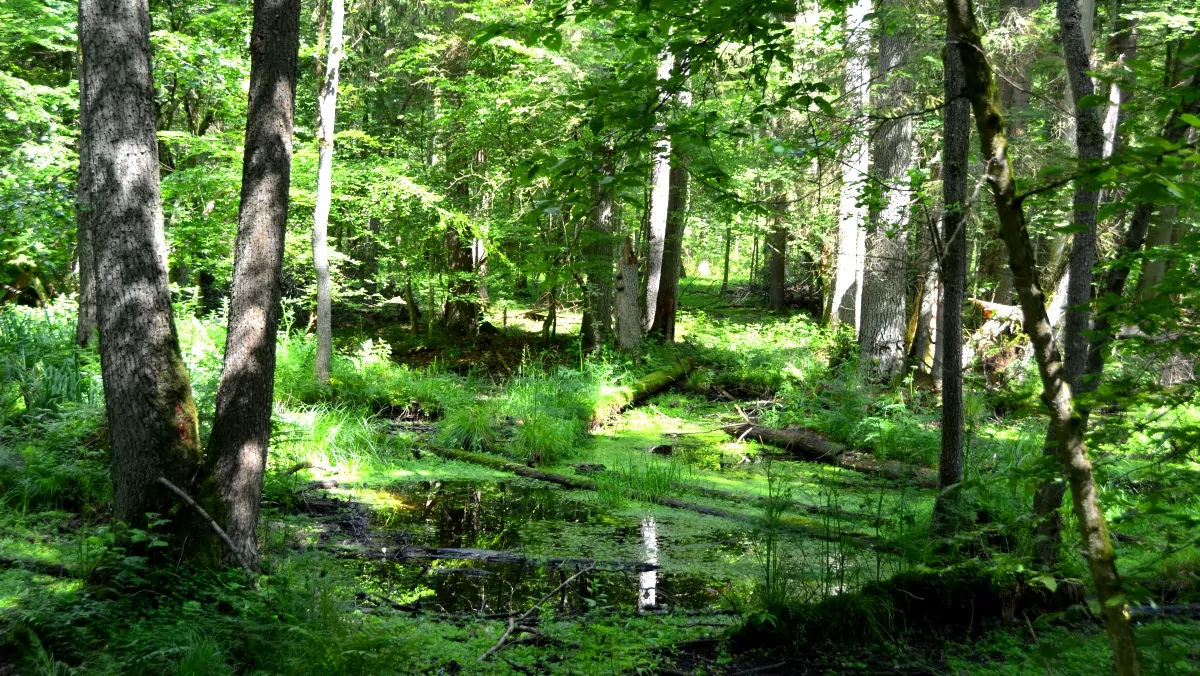
The guide showed us where the woodpeckers live and how the wild garlic spreads over the ground. This is a different world. The world of animals and nature. The way the whole of Europe looked before man took over!

Can you see bison in Poland?
It is quite possible to see bison and other wild mammals when walking through the forest, but the chances are not great. The area is huge and the animals are shy. We saw red squirrels, woodpeckers, small birds and traces of wild boar ... but no bison.

Almost in Belarus
The guide pointed to a road into the forest and said that if we just follow it for three kilometres we will reach the Belarusian border. There are border guards with submachine guns. And then the primeval forest continues on the other side. So close, and yet so far away somehow.

Lunch and bike hire
The guided hike through Bialowieza National Park took three hours and afterwards it was a good time to have lunch before going on the hunt for the bison. We had really good Russian (or Ukrainian perhaps?) beer and Polish pierogi (steamed dough dumplings) filled with game meat. Then we rented bikes and headed for the "Bison Show Reserve", where you can see bison and other wild animals in a fenced area.

Wise men and horses behind fences
Now we wanted to finally see bison in Poland, and at the Bison Show Reserve we were finally able to see the enormous beasts. It's not the same as seeing them in captivity, of course, but they're still impressive animals, weighing up to 900kg. However, don't be fooled by their clumsy appearance - they can apparently run at 40 km/h and jump two metres high!

Another interesting animal that can be seen here are the horses called "tarpans". Actually, they are not real tarpans, as the last of these ancient horses died in 1880, but using domesticated and crossbred wild horses found on rural farms, a horse has been bred to be as close to the original tarpan as possible.

And finally ... what happened? We got to see a wild visent!
When the evening came, we felt somewhat satisfied with the day, even though we were little disappointed that we did not get to see a wild bison. We had still been able to experience the wild primeval forest and we had supplemented with bison in an enclosure.
But what happened just then? A German camping neighbour came up to us at the motorhome, waved excitedly at us and hissed "Schnell ... schnell!" And what do you think we saw, just outside the campsite and only a hundred metres from our motorhome...? Did we see wild bison in Poland? Check out the film!

More to see and do in Poland
There is of course much more to see and do around Poland. Below you'll find plenty of reports with tips and inspiration for your trip.
Krynica Morska on Vistula Island - a holiday resort in Poland
Krynica Morska is located in north-eastern Poland, on the Vistula Island, and is a popular holiday and seaside resort. We...
Luxury hotels in Warsaw - Polonia Palace in Poland
The Polonia Palace in Poland is a 4-star and centrally located luxury hotel in Warsaw with 206 rooms...
Unesco World Heritage Sites in Poland - 16 places of interest
Have you seen any of the Unesco World Heritage Sites in Poland? There are currently 16, and...
Poznan, Poland - 11 things to see and do
Poznan in Poland is a city with an amazingly beautiful square. Our jaw almost dropped when...
Masurian Lakes in Poland - A canal boat trip from Mikolajki
The Masurian Lakes in Poland offer a magical holiday paradise in the eastern part of the country,...
The whole peninsula in Poland - Long white paradise beaches
The Hel Peninsula in Poland offers amazing views. This peninsula is a 35-kilometre-long spit of land that...
Recipe for Zurek - we cook Polish soup
Today's recipe is for zurek, our absolute favourite soup in Poland. I don't think we ever...
Kozlowka Palace in Poland - and a homely campsite
Kozlowka is a beautiful palace in Poland that is definitely worth a visit. The palace is a...
Polish beautiful coastal road - FREEDOMtravel themed roads
Writer: PETER BERGSTRÖM The Polish Beautiful Coastal Road is a themed route that takes you along the entire northern...
Torun, Poland - 12 things to see and do
Torun in Poland is a beautiful and historically interesting city that is a UNESCO World Heritage Site....
Polish food - specialities of Polish cuisine
Polish food, what is it? Polish cuisine is not often talked about ......
With Polferries to Poland - and a visit to Gdansk
We have embarked on a small road trip, which started with Polferries to Poland, from...
Camping Stogi in Gdansk - on the Polish coastline
Now we have made it to the Stogi campsite in Gdansk. We have been here before, but...
Gdansk - Nynäshamn with Polferries
Yesterday it was time to leave Poland and head for the ferry. We had to wait a long time in...
Radegast railway station in Łódź - Holocaust memory
The Radegast train station in Łódź is a historic railway station, known for having been used during World War II for...
Camping in Poland - how does it work?
We received some questions from a reader about camping in Poland, and were inspired to write...
Camping Metropolis in Sopot, Poland
We are at Camping Metropolis in Sopot and have now been joined by Peter's brother ...
Nicolaus Copernicus' house in Torun, Poland
The Nicolaus Copernicus House in Torun is a museum that tells the story of the life of the astronomer Copernicus,...
Gdansk attractions - a great place for a nice trip
Today we present a guest article Eating in Gdansk Travelling is a great way to discover the...
Market in Gdansk dating back to the 13th century
Every year a huge market is organised in Gdansk for everyone in Poland, running up and down the street....
Polferries Ystad-Swinoujscie - our experience
What is it like travelling with Polferries Ystad-Swinoujscie? We have recently travelled with the ferry M/F Cracovia...
Wieliczka salt mine, near Krakow, Poland
Today we went to the salt mine in Wieliczka in Poland. We were not the only ones,...
Gdansk in Poland - 25 tips for things to do
Gdansk in Poland is, in our opinion, one of the country's finest cities. The Hanseatic city of Gdansk is located on the...
Facts about Poland - 30 things you (might) not know
Writer: Peter Bergström Writing facts about Poland is a lot of fun. We have travelled a lot in...
Holidays in Zakopane - on the Tatra Mountains in Poland
Holidays in Zakopane! We have travelled to Zakopane, located in the Tatra Mountains in Poland, south...
Mechelinki - The charming little fishing village in Poland
Mechelinki used to be a small sleepy fishing village on the Polish Baltic Sea coast. Not far from here are holiday resorts...
Maszoperia - nice campsite on the Hel peninsula in Poland
Now we've found a nice campsite on the Hel peninsula in Jastarnia, about halfway out of...
A motorhome holiday in Poland - golf, cities and history
Guest writer: Minna and Kaj Avrin In the spring of 2024, we, Minna and Kaj Avrin, travelled with our motorhome...
Rewa in Poland - a swimming and surfing paradise
Rewa is located on the Polish coast, not far from the larger city of Gdynia. This is a...
Baranow Sandomierski - castle in eastern Poland
We have now started the exciting journey eastwards in Poland! From having recently been in...

Facts: Guided tours in the Bialowieza Forest
- To visit the protected part of the forest you have to go with a guide. Tours can be booked via PTTK Bialowiezawhich offers guided tours in several languages. We booked on the spot, but you can certainly book in advance as well.
- The guided tours are either three or four hours long (about 4.5 or 7 kilometres). There is not much difference between the tours, but during the 4-hour tour there are more opportunities to focus on different plants and fungi.
- We paid about 700 SEK for a private guided tour of three hours, but if there are more people in a group it is much cheaper. When you arrive at the park, you also have to pay an entrance fee, but it's only about 15 SEK per person.
- It is also possible to book tours at night/early morning, when there is a greater chance of seeing animals.
- The walk through Bialowieza National Park is easy and requires no equipment other than a pair of comfortable shoes, and perhaps a water bottle. There can be a lot of mosquitoes in the forest, so you might want to prepare yourself with mosquito repellent.
Cycling in Bialowieza
- Large parts of the forest can be visited on your own. The best way is by bike.
- If you don't have your own bike, you can easily rent one in the centre of Bialowieza. We paid 75 kr per bike for 24 hours of hire.
Bison Show Reserve
- If you don't manage to see wild bison in Poland, you can see them in Europe. Bison Show Reserve. In addition to bison, there are moose, wolves, lynx, tarpan and more. The place is about 3 km from camping U Michala. We paid 25 SEK per person.
Accommodation in Bialowieza
- Hotel: There are several smaller hotels in Bialowieza and other accommodation options. For example, check Booking.com.
- Camping: If you're travelling by campervan, there are two campsites in Bialowieza with good locations. We stood on Camping U Michala, which was simple but pleasant and run by a caring lady who speaks German.











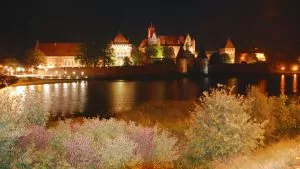





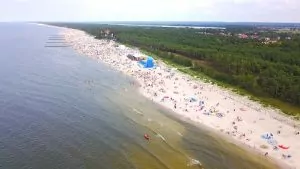




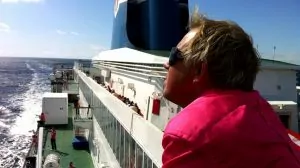




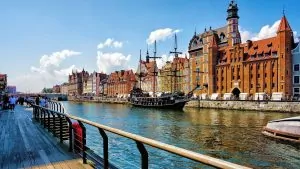

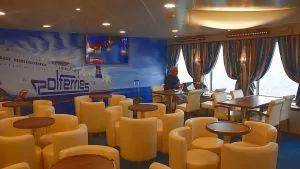



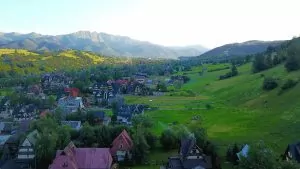




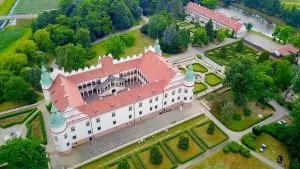

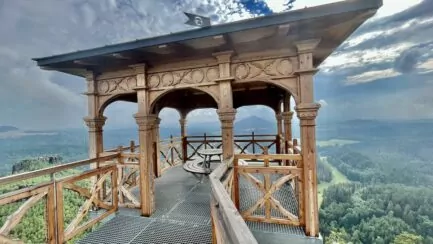







Lennart says:
Great pictures!
09 July 2017 - 6:26
Helena says:
Glad you like the pictures! Lovely environment it was 🙂
09 July 2017 - 9:33
Lena - good for the soul says:
What a forest! I think there is a special wonderful feeling in our tiny tiny tiny little primeval forest so I can only guess how cool it was there! And how powerful it must have been to see such a friend live! Nice film!
Hug Lena
09 July 2017 - 8:17
Helena says:
Wonderful that you have a surface-spotted primeval forest Lena! 🙂 Yes, this was really a cool experience! Glad you like the film 🙂
09 July 2017 - 9:34
Kenneth Risberg says:
It's an experience with a capital U. Mighty primeval forest and really big animals.
Cool with the wild Visent around the "corner".
09 July 2017 - 8:36
Helena says:
Yes, this is an experience we will never forget! The bison are really powerful! To see one in the wild ... so awesome! 🙂
09 July 2017 - 9:37
Mr Steve says:
You are truly on a great adventure. Thanks for the tour and the lesson!
PS I also got an answer to the garlic mystery.
09 July 2017 - 8:50
Helena says:
This was a real adventure! 🙂 And the garlic apparently thrives in the primeval forest, it was in abundance. I had never imagined that actually!
09 July 2017 - 9:38
Helena says:
I have now learnt that it was wild garlic and not garlic (misunderstanding on my part as the guide said 'garlic'), so I have corrected it.
10 July 2017 - 7:52
4000mil says:
This is where my daughter Alva wants to go!
09 July 2017 - 9:01
Helena says:
I understand that! Cool place on earth 🙂
09 July 2017 - 9:48
Ama de casa says:
WOW! What a cool primeval forest - and so cool to see a wild bison so close. They are really mighty those animals, and really fit absolutely fantastic in that environment 🙂.
09 July 2017 - 9:03
Helena says:
They are really powerful, the bison! Really cool to see one up close, in the wild 🙂 .
09 July 2017 - 9:49
Arne Lindh says:
A really exciting journey that I have already started planning to do myself. But was it really garlic, Allium sativum? Wild garlic, Allium ursinum, is usually called "wild garlic" and grows in such an environment. See our blog from Håverud.
09 July 2017 - 9:42
Helena says:
Glad you've started planning a trip here Arne! On your question about the garlic, I do not dare to swear on it. Our guide said "garlic", not "wild garlic". But as I said, I dare not say for sure!
09 July 2017 - 9:52
Travelsis says:
Wow, what an experience?
09 July 2017 - 9:47
Helena says:
An experience we will not forget! 🙂
09 July 2017 - 9:53
JoY says:
What a beautiful forest that is filmed very well and with that music, well done. I would have liked to lie on the ground and enjoy everything around. What an achievement to see it live at the end?
Hugs
09 July 2017 - 9:52
Helena says:
Glad to hear that you like the film! 🙂 Yes, the last one was a hit that you didn't really dare to hope for ...!
09 July 2017 - 9:54
Denandraresan.com says:
Great! Have thought about doing this many times but it has been the "wrong" side of Poland for us but thanks for the info will be a little easier to plan now. We have overland tanks and then it will probably be Europe to kamchatka and possibly longer and then this is absolutely on the road for us 🙂.
09 July 2017 - 10:15
Helena says:
Great if our info can come in handy! And wow, what an exciting trip you are planning! What is it like to drive through the woodlands towards Kamchatka? Do you know anything about the roads? What about wild animals, like bears?
09 July 2017 - 11:17
Annette says:
Nice to see such rare animals in the wild. It was also big. Beautiful with primeval forest (see many photo opportunities in that forest) and fun to see the special breed of horse. My first thought was that they resemble Icelandic horses both in size and colour, as they looked before they started breeding Icelanders with longer legs and leaner bodies. Icelanders also have that mouse-black colour with a black eel on their back. Nice to see horses that are at least descended from primitive horses.
09 July 2017 - 10:20
Helena says:
Most of the more original horse breeds seem to have that kind of drawing, with a black eel on the back for example. These horses are of course also quite small, about 120-135 cm in height at the withers, I think.
09 July 2017 - 11:19
Only British says:
Unfortunately, the forest is threatened by the new government that does not believe in climate change and understands the importance of the forest for the environment, but wants to log. Hopefully the friends of the forest can change their minds.
09 July 2017 - 10:39
Helena says:
Yes, I have also heard about it! I don't think the whole forest is threatened. In the inner protected parts they are not allowed to harvest. But in some of the outer parts it has apparently been harvested. I really hope they realise that this forest is incredibly important to preserve!
09 July 2017 - 11:22
Only British says:
Yes, they have also logged in the Natura 2000 area apparently, but now my old colleagues in Brussels are working full time it seems.
http://www.aftonbladet.se/senastenytt/ttnyheter/utrikes/article25358387.ab
13 July 2017 - 22:36
Husis blog says:
Wow, doubtful if the owners would want to meet a warthog in the forest, powerful animal. That they were not as clumsy as they look, the owners knew that. But that they could run and jump like that was still new information, never too late to learn. The owners only have cows in the pasture behind the car ?.
09 July 2017 - 11:35
Helena says:
I would probably also be a bit nervous if I ended up face to face with it ... 😉 But actually they are supposed to be nice, and maybe rather shy. Probably only dangerous if you end up between the mother and the baby ...
09 July 2017 - 13:12
Birgitta in Umeå says:
So cool with the bison so close by. What an experience!
Really nice horses were on the reserve. Do you ride them on occasion?
I recognise the primeval forest. I live in Norrland and here we have a lot of them, so come up to us in the inland of Västerbotten. Maybe not so many tree species though.
09 July 2017 - 12:38
Helena says:
I don't think the horses are widely ridden, but according to Wikipedia they can be used for riding. There are not that many in the world as far as I know. Mostly here in Poland but some have also been exported to the USA. And yes, there is a lot of forest in Norrland! 🙂 This one in Poland is supposed to be special because it is considered by UNESCO to be the only one left completely untouched since man invaded the continent ... 😉.
09 July 2017 - 13:27
Lena & Jan says:
Nämen jisses what a trip AND with a real twist of excitement then there in the primeval forest you finally got to see a wild Visent beast, incredible how heavy it was, Bison looks almost small in comparison. ? ? ?
Thank you for travelling in a country that is unexplored for us, but we have a neighbour who is Polish and is happy to tell us about the country. Will give her your blog address? ?
09 July 2017 - 12:40
Helena says:
It was really cool to finally see it "for real". A mighty thing!!! 😉 We like Poland - a country that has a lot to offer! 🙂
09 July 2017 - 13:28
Mr Nils-Åke Hansson says:
Really interesting,
09 July 2017 - 14:40
Stina says:
Awesome and great pictures.
I have changed the name of my personal blog.
Greetings Stina
sparklingtajland.blogspot.se/
09 July 2017 - 15:15
Helena says:
Then I will of course check out your "new" blog! 🙂
09 July 2017 - 18:49
Diana's dreams says:
Awesome sunny greetings from Florida :) hugs
09 July 2017 - 15:19
Helena says:
Thank you very much! Hope you are having a great time!
09 July 2017 - 18:50
Anki says:
Wow ... what a wonderful forest and such nice pictures ... so exciting to follow along via the film! Thank you so much!
09 July 2017 - 17:35
Helena says:
Glad you like the pictures and the film! The forest was magical 🙂 .
09 July 2017 - 18:50
Britt-Marie Lundgren says:
What a cool day and then the wild free whistle as a finale! So cool and real old forest is delicious, so green!
09 July 2017 - 18:04
Helena says:
Really intense green forest! And yes, really cool that we went to see wild bison! 🙂 Have fun!
09 July 2017 - 18:51
BP says:
Talk about attentive car neighbours!!! Oh what happiness to see a wild bison (strange Swedish name "visent". Prefer bison, because then I know what it is;-).
The forest was cool and I was reminded of Jean M Auel's "The Cave Bear People" actually. Don't really know why...
09 July 2017 - 19:01
Helena says:
Isn't bison a strange name? I read somewhere that both words derive from the same word, but that bison is the Greek variant and bison the Germanic one... Apparently you can also say "European bison" and we've been a bit wobbly (disagreeing?) about which one makes more sense... 😉 .
09 July 2017 - 20:35
Frida G Svensson says:
Just found your blog and just wanted to leave a comment that I like it so much!
09 July 2017 - 19:02
Helena says:
Thanks Frida, great to hear! Your comment ended up in the spam mail first, but now I have approved it so in the future it should be possible to comment without problems!
10 July 2017 - 7:22
Ann-Louise says:
What a cool forest and what cool animals! How funny that a bison showed up so close to your campervan too!
09 July 2017 - 20:08
Helena says:
Right? Fantastic nature experience 🙂
09 July 2017 - 20:36
Matts Torebring says:
You give us fascinating presentations. I would love this too. Excursions in nature like this must have been marvellous. But now you have to start thinking about yourselves too.
09 July 2017 - 20:19
Helena says:
This was a great trip! Yes, you are right that we may work a little too hard sometimes. At the same time, it's ambiguous. On the one hand, we think this is fun. On the other hand, we want to start a business ... and then it's hard to just take it easy. Absolutely sure you know what we mean 😉 At the same time, I will say that we love being in the motorhome and these have been fantastic weeks! 🙂
09 July 2017 - 20:38
Marina says:
What a fun thing to do! Definitely a different kind of holiday. A bit cool to be "so close to the border but still so far away". There may be a reason why you shouldn't wander around without a guide, maybe not so fun if you end up in the wrong place in that forest....
09 July 2017 - 20:29
Helena says:
Yes, haha, a little hard to suddenly stand at a border with a gun in your face maybe ... But apparently the park is supposed to be nice on the Belarusian side too! If you have the right papers, you can probably get across ...
09 July 2017 - 20:40
Ditte says:
What a great experience! And you got to see a lot, plus bison. Good to have attentive neighbours.
Great pictures and a thrilling trip, but seeing the animals in a cage is not at all the same as seeing them free in the wild. And you got that. Fun to follow along.
09 July 2017 - 20:32
Helena says:
Fencing is not at all the same thing, of course, and ideally you want animals to be free. But if the parks help with reintroduction and the like, that's good. Personally, we were very happy to see a bison in the wild. Not in the forest as we might have imagined, but in a meadow in front of a residential building 🙂 .
09 July 2017 - 20:41
Ann-Charlotte says:
Great experiences, right up our alley! Maybe it will be a motorhome in the next phase of our camping life, then it is easier to drive longer distances on holiday.
09 July 2017 - 23:25
Helena says:
Yes, especially if you want to move around often and drive longer distances, a motorhome can be more practical.
10 July 2017 - 7:23
Christine - 29°. says:
So cool animals! And fun that you finally got to see one in the wild, and outside the campsite as well. Fun! 🙂
10 July 2017 - 10:50
Helena says:
It becomes a special experience just when they are wild. Soooo happy that we got to see one, and so close 🙂.
26 July 2017 - 8:09
Maggan and Ingemar says:
We follow and absorb what you see and experience. See that you have a lot of time on your 3 week trip. We have about the same time to experience the countries around Poland. We also have no real planning on how and where we are going, it may come during the journey. Exciting experiences in any case. Have a continued good time.
10 July 2017 - 19:16
Helena says:
Nice that you "follow along". Three weeks has actually been a bit short for the distance we travelled, would have been nice with a little more time ... 😉.
26 July 2017 - 8:10
Marianne - Glimpses of the world says:
Cool that you got to see a wild bison in the end! I find it hard to imagine that those animals can jump two metres... 😀.
10 July 2017 - 19:47
Helena says:
Yes, it's hard to imagine...! They are mostly calm and grazing ... but apparently they can jump! 🙂
26 July 2017 - 8:11
Eva - People in the Street says:
So very cool! 🙂
11 July 2017 - 11:25
Maria's Memoirs says:
Oh what an exciting place, there is something magical about really ancient forests, have been in ancient forests in different places in Australia and in Tenerife 🙂 The one in Tenerife is a kind of rainforest that previously also existed along the Mediterranean countries in Europe, but some ice age ended those forests ...
26 July 2017 - 5:50
Helena says:
In Australia I can understand that there are really cool forests and wild nature!!!! I missed the forest in Tenerife ...
26 July 2017 - 8:11
Otherwise says:
What great inspiring pictures! so fantastic to experience these huge animals! but you get worried that the Polish Minister of the Environment apparently stated last year that he wants to cut down the area!!! this must not happen it would be a complete disaster!!!
25 August 2017 - 11:31